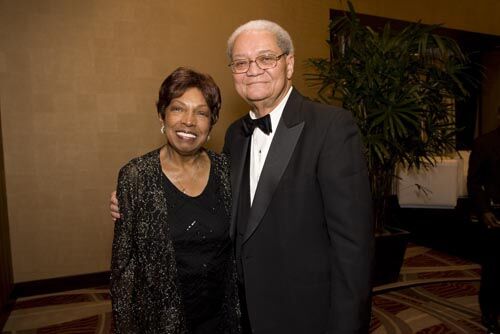For one set of peers who faced a life-altering health issue, tomorrow holds promise.
Once a month, a range of 10 to three-dozen participants convene as the Stroke Survivor and Caregiver Support Group, hosted by St. Joseph’s Hospital Ann Arbor in Washtenaw County. Together they reflect on experiences, share encouragement – and, occasionally, have a ball. Some are wheelchair-bound, others suffer less serious effects, but all participate in outings, like bowling, that might be considered ambitious for stroke survivors.
 “Everybody bowls!” says Kim Gray, stroke program coordinator and registered nurse. “Even if you’ve never bowled in your life, or you’re in a wheelchair and have limited strength or mobility, they can set up the bumper walls and everybody has a great time.”
“Everybody bowls!” says Kim Gray, stroke program coordinator and registered nurse. “Even if you’ve never bowled in your life, or you’re in a wheelchair and have limited strength or mobility, they can set up the bumper walls and everybody has a great time.”
But while Gray is enthusiastic and upbeat when discussing her Stroke Survivor facilitation, her cheery tone turns more serious when she notes the gradual increase of patients, who’ve not turned 50, attending the seven-year-old program. In Michigan and nationally, medical research reveals an alarming rise in the past 20 years of strokes affecting those younger than 55.
One recent study in the journal Neurology notes a significant increase among blacks ages 20 to 54, from 83 of 100,000 people in the mid-1990s to 128 of 100,000 about 10 years later. Ann Arbor resident Thomas Kirkland, who recently joined the Stroke Survivor and Caregiver Support Group, found himself reflected in the increased number on Easter 2013.
“I was singing in a choir at church,” says Kirkland, 49.
Along with being a choir member, Kirkland says he supported the pastors and music ministry, served as a union rep at his job, and had suffered the recent death of his father, all of which left him stressed. While he appeared physically healthy, he didn’t cook for himself, so he often relied on fast food. Ironically, a nutritious snack alerted him to his only symptoms at church that Sunday: “I went to get a banana and I couldn’t eat it,” Kirkland says, remembering how the muscles in his face went numb.
While Kirkland didn’t suffer from any known risk factors, high blood pressure and other comorbid conditions are surfacing in younger Michigan residents, Gray says.
 “The problem, from a societal standpoint, is if you’re working, for example, at 35, and you have a stroke and can’t work anymore, that’s 30 years, potentially, of disability, plus anything (assistance-related) after that,” she says. “So it’s important to always work towards regaining function that might have been lost, and feeling supported in the survivor’s journey.”
“The problem, from a societal standpoint, is if you’re working, for example, at 35, and you have a stroke and can’t work anymore, that’s 30 years, potentially, of disability, plus anything (assistance-related) after that,” she says. “So it’s important to always work towards regaining function that might have been lost, and feeling supported in the survivor’s journey.”
Like other health professionals, Gray recommends reducing risk factors through diet, exercise, rest, not smoking, and working with doctors to control blood pressure, cholesterol and diabetes, all of which are linked to strokes. But Gray stresses to group members like Kirkland that young stroke survivors can soldier on, often working again or regaining driving and other skills.
Meanwhile, Kirkland says he has progressed from using a wheelchair to walking, and he’s optimistic.
He adds, “Hopefully, one day I’ll run.”
At 78, Jeane Lee has less in common than younger survivors, but she urges involvement in stroke support programs like one she attended while recovering from her own episode four years ago: “You have someone to talk to about how they were able to get through it, and the American Heart Association also sends helpful information if you join the mailing list.”
May is National Stroke Awareness Month.
If you have or see someone having any of these symptoms call 9-1-1 immediately:
• Sudden numbness or weakness of the face, arm or leg, especially on one side of the body
• Sudden confusion or trouble speaking or understanding
• Sudden trouble seeing in one or both eyes
• Sudden trouble walking, dizziness, loss of balance or coordination
• Sudden, severe headache with no known cause
Do not wait to see if the symptoms will disappear! Even if the symptoms only last a short time, seek immediate medical help.
Your doctor can help you to decrease your risks. You can also help yourself in several ways:
• Control your high blood pressure. Medications and diet changes can help.
• Stop smoking. Even if you have smoked for years, after one year of not smoking your risk is cut in half. Eventually, your risk is the same as a person that has never smoked. It is never too late.
• Treat your diabetes. Diabetes can lead to many complications. Watch your glucose levels closely.
• Eat a healthy diet. If you’re overweight, even just losing 10 to 20 pounds can help lower your heart disease risk. If you struggle with losing weight and can’t lose weight on your own, talk to a doctor, registered dietitian (R.D.), or nutritionist.
• Be physically active – you don’t have to be an athlete to reduce your risk. Walking daily, taking the stairs vs. the elevator or parking in the back of the lot at work are all ways to get in extra steps.
• Maintain a healthy weight – speak to your physician to achieve your ideal body weight.
• Get regular medical checkups.
• Learn ways to reduce stress.


